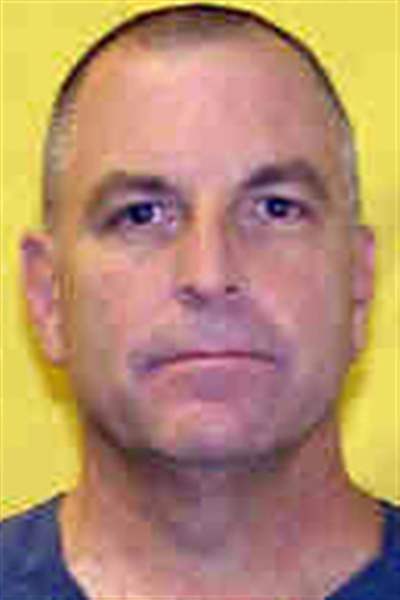
Convicted coin dealer settles in at new confines in southeast Ohio
12/28/2008
Noe
NOT BLADE PHOTO

Tom Noe has been at Hocking Correctional, a minimum and medium-security prison, since earlier this month.
Tom Noe, once a political insider who rubbed elbows with governors, senators, and President Bush, is now on laundry duty at Hocking Correctional Facility in Nelsonville, Ohio.
The former Toledo-area rare-coin dealer - who is serving an 18-year sentence stemming from his conviction for stealing millions of dollars from a
$50 million rare-coin fund he managed for the Ohio Bureau of Workers' Compensation - is settling into the state prison, about 60 miles southeast of Columbus.
Noe, 54, arrived at the minimum and medium-security prison that houses 481 inmates earlier this month. His life consists of lining up for head counts several times each day and working as a laundry attendant, making $16 to $24 per month - a far cry from the millions the state allowed him to invest and the million-dollar homes he lived in along Lake Erie and in the Florida Keys.
"He gets up around 6 a.m., cleans up around his bunk, goes to breakfast, then goes to work in the laundry," said Robin Gee, the spokesman for the prison, recalling the typical day in the life of a Hocking inmate.
His afternoon is filled with more work in the laundry, three head counts, lunch and dinner, and then recreational activities, such as arts and crafts, movies, card games, or exercise - but no Internet, Ms. Gee said. Visitors are allowed five days a week.

Noe
"Lights are out around 10 o'clock," Ms. Gee added.
Noe lives in a dorm with 214 other prisoners, sleeping on either top or bottom of a bunk bed. The inmates sharing his dorm range from people like him, who have been convicted of financial crimes, to more violent offenders such as rapists and murderers.
In 2006, a Lucas County judge sentenced Noe to 18 years in prison and ordered him to pay $13.7 million after a jury convicted him on 29 charges connected to his management of the state's rare-coin funds.
Noe - the former chairman of the Ohio Board of Regents and Ohio Turnpike Commission and former chairman of the Lucas County Republican Party - was the central figure in a scandal that became known as 'Coingate,' which resulted in nearly 20 criminal convictions, including that of former Ohio Gov. Bob Taft on ethics charges. Noe is appealing his conviction on corruption, theft, money laundering, and forgery charges, asserting he didn't get a fair trial because of the large amount of media coverage focused on his case.
Mr. Noe's problems began after The Blade in April, 2005, began writing about his management of the Ohio Bureau of Workers' Compensation's rare-coin funds.
Noe isn't the only high-profile prisoner in the Hocking prison.
Gerald Robinson, the Toledo priest convicted in 2006 of murdering Sister Margaret Ann Pahl in 1980, is serving a sentence of 15 years to life at the prison.
Another Hocking inmate, Timothy J. Bowers, now 65, gained national attention, including a headline in the New York Times, last year when he robbed a bank.
According to media accounts, Bowers, who lost a job as a deliveryman for a drug wholesaler, immediately surrendered to a security guard in hopes he would get a prison sentence as a bridge to Social Security, which he could collect in just a few years.
Troy McCurdy, 67, of Blacklick, Ohio, was released two years ago from Hocking after serving time there on a conviction of aggravated vehicular assault. McCurdy, in a telephone interview with The Blade, said he spent most of his time in Hocking "working a little bit, sleeping, and laying around."
"I didn't have it bad down there," said McCurdy, who still visits the prison regularly for Alcoholics Anonymous meetings.
McCurdy commented on Hocking's reputation as a prison for "old folks." Hocking is known for housing the state's oldest inmates, with an average age of 64. "It is mainly like a rest home to me," said McCurdy, who has spent time in other Ohio lock-ups. "[Hocking] is a lot better because you don't have all those kids."
McCurdy said he never had any problems with safety at the prison and that some inmates were eager to talk about what landed them behind bars.
"I guess everybody had their little story to tell," he said.
The Ohio Department of Rehabilitation and Correction classified Noe as a level two prisoner, meaning he's considered medium security. The calculation was based on a number of factors, including his notoriety, the nature of his crimes, his age, and his criminal history.
In time, Noe can become a minimum-security prisoner, which potentially could qualify him for jobs outside the prison, such as working on crews picking up litter along expressways.
Before heading to state prison in October, Noe finished serving nearly two years in a federal prison in Florida after pleading guilty to making $45,400 in illegal contributions to President Bush's re-election campaign.
Toledo attorney Jerry Phillips said Noe likely will notice some differences between state and federal prisons.
Federal prisons, especially low-security ones such as the one where Noe was incarcerated, typically give prisoners more room to roam and are less crowded, Mr. Phillips said.
"A state institution is usually much more highly regulated," Mr. Phillips said. "Probably the most significant thing is his ability to move within the institution and how crowded the institution is."
Contact Steve Eder at:
seder@theblade.com or
419-304-1680.